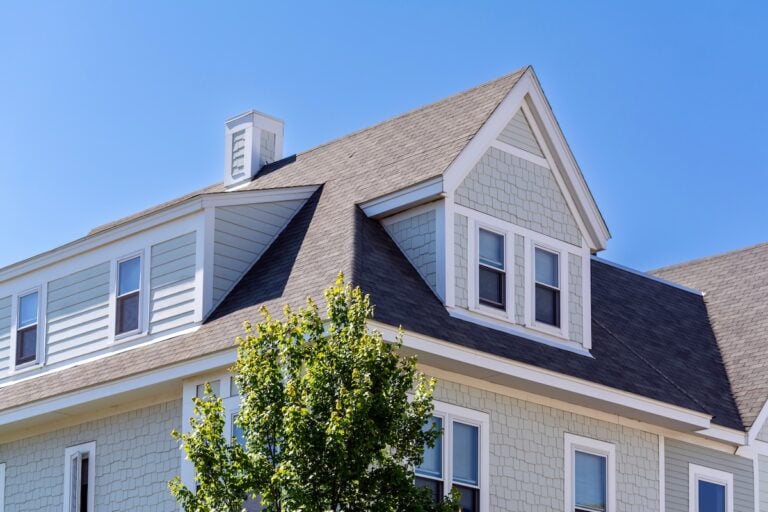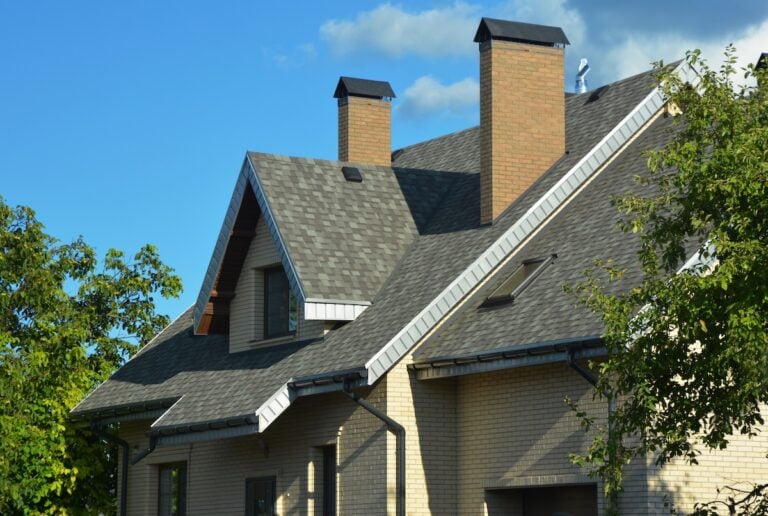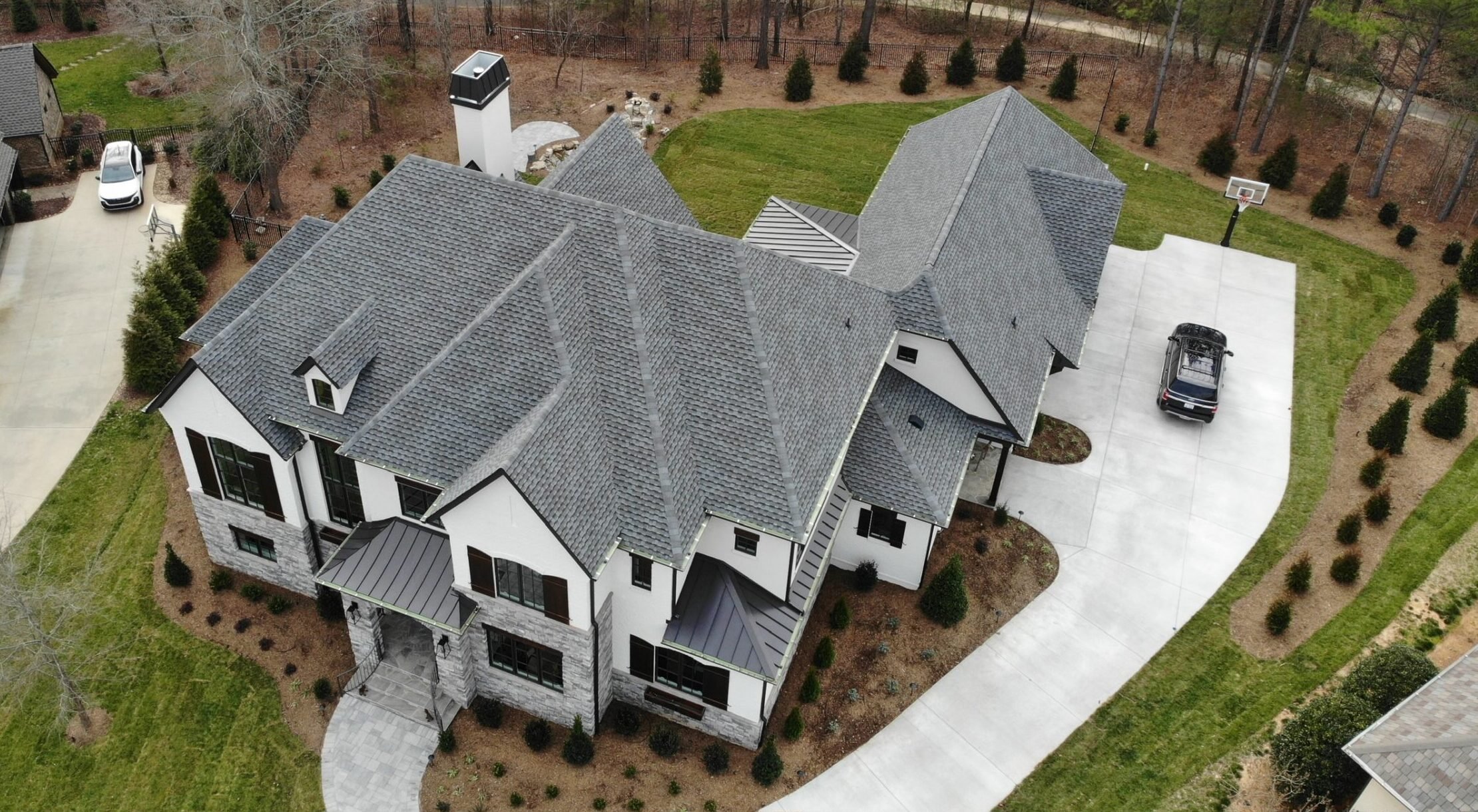How Much Does a Shingle Roof Cost? (Installation Guide)
Posted 6.19.25 | 8 Minute Read

A new shingle roof is a significant investment that can transform your home’s appearance and protection. Understanding shingle roof cost helps you budget effectively and make informed decisions about your roofing project. This comprehensive guide covers everything you need to know about shingle roof pricing, from installation expenses to the factors that influence your final bill.
We’ll explore:
- Average shingle roof costs and pricing ranges
- Key factors that affect your total investment
- Tips for getting the best value for your money
💰 Average Shingle Roof Cost

The cost of installing a new shingle roof can vary widely, depending on several factors such as the size and complexity of your home, your location, and the type of materials you choose. Homeowners should be prepared to spend anywhere between $8,000 and $20,000 for a full replacement of a shingle roof on an average-sized home. However, these costs can increase or decrease based on specific circumstances.
For a typical 2,000-square-foot home, here’s a breakdown of what you might expect to pay:
- Basic asphalt shingles: $8,000 – $12,000
These are the most affordable option and provide decent durability and weather resistance. They are suitable for homeowners on a budget and offer a lifespan of around 15-20 years when properly maintained.
- Mid-grade asphalt shingles: $12,000 – $16,000
This option includes higher-quality shingles that provide improved durability, better resistance to weather elements, and a longer lifespan of up to 25 years. They are a great balance between cost and performance.
- Premium asphalt shingles: $16,000 – $20,000
Premium shingles are designed for maximum durability, aesthetics, and energy efficiency. They often come with added features like impact resistance and longer lifespans, some reaching up to 30 years or more. These are ideal if you’re looking for high-end options that enhance curb appeal and add value to your home.
👉 7 Key Factors That Affect Shingle Roof Cost

Understanding what influences your shingle roof cost helps you make better decisions and avoid unexpected expenses. Here are the seven most important factors:
1. Roof Size and Complexity
The size and complexity of your roof are significant factors in determining costs. Roofing contractors calculate roof size in “squares,” with one square equaling 100 square feet. For example, a simple, single-story ranch home might require 15-20 squares, whereas a two-story home with multiple levels, angles, and features could need 30-40 squares or more.
Complex roof designs with steep pitches, multiple angles, dormers, valleys, or unique architectural elements require more time, effort, and materials to install properly. As a result, these intricate designs can increase labor and material costs by 10-25%. Simpler, straightforward roofs are more cost-effective as they are quicker and easier to install.
2. Shingle Quality and Brand
The type and brand of shingles you choose play a crucial role in your overall roofing investment. Premium brands like GAF, CertainTeed, and Owens Corning may come with a higher price tag but offer superior benefits, such as longer warranties, better weather resistance, and enhanced durability. These brands are often a popular choice for homeowners looking for a long-term solution.
Higher-quality shingles often provide better value in the long run. While the upfront costs may be higher, these shingles are often more energy-efficient, resistant to environmental wear and tear, and capable of maintaining their appearance over time. For homeowners in areas with extreme weather, investing in high-quality shingles can also reduce maintenance and repair costs down the road.
3. Geographic Location
Where you live can dramatically affect the cost of your roof replacement. Labor costs are generally higher in urban areas due to increased demand, a higher cost of living, and competitive contractor rates, while rural areas often have lower labor rates.
Additionally, the climate in your region influences the materials and methods required for your roof. In areas prone to severe weather—such as heavy snowfall, hurricanes, hail or extreme heat—contractors may recommend more durable underlayment, specialized materials, or additional insulation to withstand the elements. The added expense ensures your roof performs well under local weather conditions.
4. Roof Pitch and Accessibility
The pitch, or steepness, of your roof, heavily impacts labor costs. Steeper roofs are more challenging and dangerous to work on, requiring additional safety measures, specialized equipment, and more time to complete. For example, a low-slope roof is faster and less risky for contractors, generally keeping labor costs lower.
Accessibility is another key factor. If your home is surrounded by landscaping, fences, or other obstacles, contractors may need to use extra equipment like cranes or scaffolding to transport materials and complete the job. This added effort increases both labor and equipment costs.
5. Existing Roof Condition
The current state of your roof can significantly influence the overall expense of a replacement. If your roof is in good condition with minimal issues, costs remain manageable. However, roofs with extensive damage—like structural issues, rotting decking, or water infiltration—require time-consuming and costly repairs.
Additionally, if your roof has multiple layers of old shingles that need removal, expect to pay more for labor and disposal fees. Removing multiple layers takes longer and generates more debris. Structural repairs, such as replacing damaged decking or reinforcing weakened areas, can add thousands of dollars to your project.
6. Permits and Inspections
Local building codes often require homeowners to obtain permits for roof replacement projects. Permit fees typically range from $100 to $500, depending on your location and the scope of work. Permits ensure that the project complies with local regulations and is safe for your home.
In some regions, inspections are mandatory as part of the roofing process. These inspections may occur before, during, or after installation to verify the quality of work and compliance with codes. While inspections provide peace of mind, they may also come with additional fees, adding to your overall costs.
7. Seasonal Timing
The time of year you choose to replace your roof can affect pricing. Roofing contractors are busiest during the spring and summer months, which are considered peak seasons. During this time, demand is high, and availability may be limited, often leading to higher prices.
If you’re looking to save money, consider scheduling your roof replacement during the off-season—fall and winter. Contractors are typically less busy during these months, and some may offer discounts of 10-20% to encourage business. However, keep in mind that weather conditions may impact scheduling and completion times during the colder months.
💵 Getting the Best Value for Your Money

Maximizing your shingle roof investment requires careful planning and smart choices:
Choose the Right Contractor
It’s important to select a contractor you can trust when undertaking a roof replacement project. Work with licensed and insured professionals who have a proven reputation in your area. A reliable contractor will not only provide quality workmanship but also offer solid warranties to back their work. At Great State Roofing, we pride ourselves on delivering detailed, upfront estimates so you know exactly what to expect. Plus, our comprehensive warranties ensure peace of mind long after the project is complete. Always research reviews, ask for references, and verify credentials before committing to a contractor.
Balance Cost and Quality
When it comes to roofing, you often get what you pay for. While premium shingles or materials may initially cost more, they can be a smart long-term investment. High-quality shingles typically offer greater durability, meaning fewer repairs and replacements over time. Additionally, many premium options come with energy-efficient features, helping to lower your utility bills in the long run. Striking a balance between cost and quality ensures you’re making a decision that works for your budget while adding lasting value to your home.
Consider Financing Options
Roof replacement is a significant expense, but many contractors offer financing options to make it more manageable. These plans allow homeowners to spread the cost over time, reducing the upfront financial burden. Whether you’re dealing with an unexpected roof repair or planning a full replacement, financing can make a high-quality roofing solution more accessible. Talk to your contractor about available payment plans, interest rates, and terms to find an option that fits your financial situation. Remember, investing in your roof is investing in the long-term safety and value of your home.
Time Your Project Wisely
Timing can make a big difference in the cost and efficiency of your roofing project. Scheduling your roof replacement during off-peak seasons, such as late winter or early spring, can help you save on labor costs and avoid long waiting periods. Contractors tend to be more available during these times, which can lead to faster project completion and even discounted rates in some cases. Planning ahead and choosing the right time can help you maximize savings and ensure your roofing project is completed without unnecessary delays.
🏠 Protect Your Investment with Great State Roofing
When it comes to investing in a shingle roof, choosing the right team makes all the difference. At Great State Roofing, we pride ourselves on delivering top-notch craftsmanship, clear communication, and reliable service tailored to your needs.
With premium materials, competitive pricing, and a deep understanding of North Carolina’s unique weather, we’re the team you can trust to protect your home for years to come. Ready to get started? Contact us today for a free consultation and let’s build a roof you can count on!






